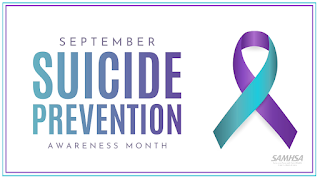Social-Emotional Learning Supports
By Eva M. Bishop, M.Ed., School Counselor
So, just as I’m constantly reshaping and reframing how I help each one of my own boys navigate their new worlds, I also find myself adjusting how I guide and assist my kids from school. Distance learning hasn’t changed our need to modify, it has only reinforced it. When supporting the social/emotional needs of students, we must be sure to diversify activities and outlets used, making sure they help us meet the needs of ALL. No matter what their personal struggle with learning at home may be, or how the struggle manifests itself, we as educators, parents, and guardians, must be ready to pivot.
Whether kids need a tremendous amount of social/emotional activities to help them stay connected, motivated and focused, or whether they need little to none, there are plenty of ways for stakeholders to facilitate making this happen for them. These same activities can help meet the mental health needs of students by allowing them the time and platforms to be heard and to express themselves. The following are examples I’ve shared with teachers and parents about how kids can support other kids during this time of learning at home:
- Padlet prompts: a great way for students to share responses to a specific question (i.e. “If you could teleport yourself back to school, what would you do when you got there?”) or, share shout outs/encouraging words with friends. Be sure that the questions for response are open-ended (the key is to ask questions that require thought and reflection; more than just a “yes” or “no”). Cool backgrounds and kid-friendly graphics and pictures help make this an engaging way for kids to communicate safely with each other. Learn more here at: www.padlet.com
- Online art shows: choose a theme for students to draw/create other forms of art to share online with their peers (also easily done on Padlet). This is a great one for students to explore specific emotions/feelings/thoughts they may be struggling with. Pictures can often help express the verbally inexpressible ideas of disappointment, sadness, frustration, etc. This activity can be easily initiated by saying, “Show me how you are feeling.”
- Old fashion pen pals (depending on age, pals may need to be set up by like gender): get out paper and pen and write to an assigned buddy about things they are experiencing, feelings about being out of school, things they miss; also, be sure to suggest students ask a couple of questions in their letter to help in the response of their pen pal.
- Online book clubs: have students choose from a list of books that they can all vote for one to read. Set up online meetings for them to meet and discuss the assigned reading each week. Books that are age appropriate and with themes about community, courage, and perseverance would be great for the current world situation.
- Collaborative videos: themes such as a talent show, show and tell, etc. can be a collaborative effort through safe and easy to use online programs such as “wevideo.” Sometimes, it all just needs to be about having fun. Letting loose and releasing endorphins. Themed videos are a great way for kids to collaborate and connect!
A final tip as you facilitate these activities…participate, listen, and engage. Your presence in the process is one of the most powerful predictors of success as your student navigates their “new normal.”





Comments
Post a Comment